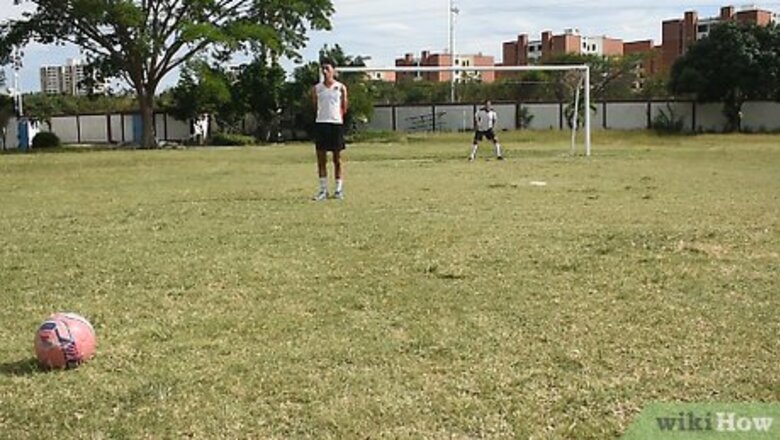
views
Aiming the Shot

Watch the keeper. The opposing keeper will give you a good idea about where to aim your kick. When a direct free kick is called, some of the opposing players will form a wall ten yards away from you in front of the keeper. While the purpose of the wall is to help the keeper defend against the kick, it can also obscure his view of the striker. Usually, the keeper will try to stay in the middle of the goal. If he does this, aim your kick toward either the left or right goal post. If the keeper remains closer to one side of the goal, aim your shot to the opposite side or try to kick it over the wall. Try to put the ball in a difficult spot for the keeper to react to. You might even be able to trick the keeper by looking in the opposite direction and kicking where he started off. If the infraction occurs in the opposing penalty box, you’ll kick a penalty kick. This is a type of direct free kick in which only the striker and the goalie participate.

Check the wind. You should always know how hard and which direction the wind is blowing before you take your kick. Severe wind can drastically alter the trajectory of the ball. Take a peek at the corner flags on either side of the pitch before you set up your shot. Take the wind into consideration and adjust your aim so that the ball still goes where you want it to. Remember that a strong gust of wind can also cause your ball to sail over the goal post so you might have to aim the ball lower than you normally would. A weak kick will be affected by the wind more than a powerful kick.
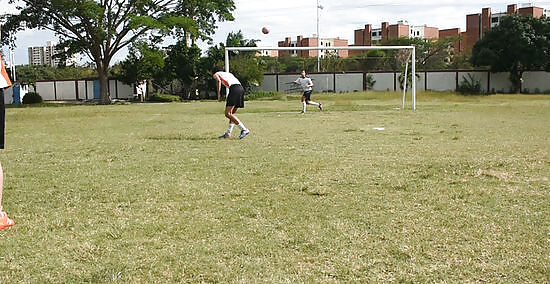
Follow through. Complete the motion of your kick by bringing your leg all the way through. Following through with your shot will guide it in the right direction. Think of your leg like a pendulum swinging straight through the ball. If you don’t follow through with your shot, it may end up in a different spot than you intend it to. Keep your follow through controlled. If you try to follow through too much, you could hyper-extend your leg or slip and fall on your back. Your kick should always be controlled so you don't get hurt. Hold your follow through for a few seconds after kicking the ball.
Kicking the Shot
Run up to the ball. The length of your run-up will depend on how much power you need to generate for your shot. If the direct kick is placed far away from the opposing goal, you’ll need more power. Measure out four or five steps. Your run-up for a long shot should cover about ten yards. If the direct kick is placed closer to the opposing goal, accuracy will be more important than power. For a short shot, you may only need to take a one step run-up. Practice your run-up before game time to get it perfect. If you stutter-step to the ball, you’ll lose power and accuracy. When deciding how long of a run-up to take, take into account the strength of your leg. If you’re a particularly powerful striker, you might not need to take as long of a run-up.
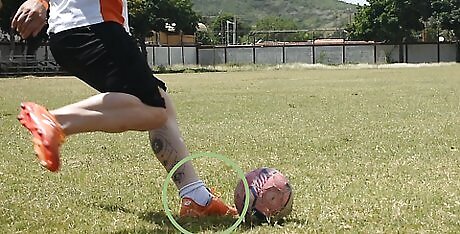
Keep your standing foot close to the ball. When you kick the ball, make sure that your non-kicking foot lands as close as possible to the ball. The nearer to the ball your standing foot is when you make contact, the better control you’ll have over where the ball goes. If your standing leg is far away from the ball, you might unintentionally slice or hook your shot. Make sure that your standing leg does not touch the ball. If it does, you’ll be called for a double touch when you kick it. When your foot lands, make sure it is pointed toward where you want the shot to go.
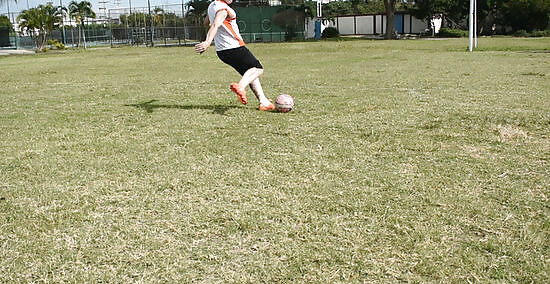
Kick the ball straight. If you want your kick to travel in a straight line, aim just below the center of the ball. The top of your foot should make contact with the ball in the center of your laces. If you do this properly, the ball will move directly where you kick it. Contacting the ball in the middle of your laces will also give your kick more power. You may want to use this style for longer direct free kicks or if you see an opening in your opponent’s defense that you want to quickly exploit. This type of kick is not good for kicking over the wall. Your ball will continue moving in a straight line after it crosses the wall and will likely sail over the net.

Curl the ball if you don't have a straight shot. If you can’t find a straight path to the goal, you can try curling or bending your shot around the defenders. To curl the ball, you’ll need to get it spinning. Contact the ball with the inside of your foot. Try to kick the ball slightly to the right of its center to make it start spinning. After you make contact with the ball, follow through towards your opposite leg instead of straight in front of you. Curling the ball can help you get it around the wall. If you are kicking from far away, you can still curl the ball with the top of your foot. However, the ball won’t curve as much as if you use the inside of your foot.

Use a knuckle ball to make a unique shot. A knuckle ball is a kick that has very little to no spin. Because the ball isn’t spinning in a particular direction, it can move in a very unpredictable way. To kick a knuckle ball, kick it with the densest part of your foot. Make contact with the ball at the top inside corner of your laces near your sock. After you make contact with the ball bring your kicking leg toward your non-kicking leg. Don’t follow through when kicking a knuckle ball or you'll cause it to spin. Rather than swinging through, think of kicking the ball in a punching motion. A knuckle ball can move straight down, in a loop or side-to-side depending on how little it spins.
Using Your Advantages
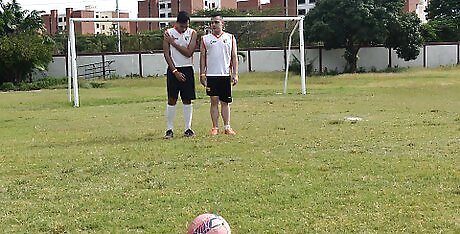
Stall the wall. When you kick a direct free kick, your opponents have to be at least ten yards away from you. When the referee gives you the okay to kick, the players in the opposing wall will start to inch towards you to get in position to block your shot. Have two of your teammates stand on either side of the wall to keep it from advancing. The opposing team will think twice about over-committing to your shot if there’s two people on either side of them that could get the ball.
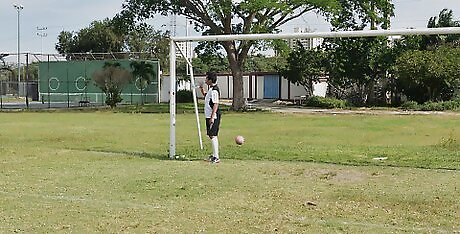
Catch the keeper off guard. The opposing keeper might expect you to take your time to plan out your direct kick. If you immediately take the shot right when the referee blows the whistle, the goalie might not be prepared to react to it. This tactic works best for shorter direct free kicks and penalty kicks. If you have to kick from far away, the keeper will have more time to react. A straight kick works best for this move as you want the ball to reach the net as quickly as possible. You can also watch footage of the opposing keeper in previous games. See what kind of shots they have difficulty defending.
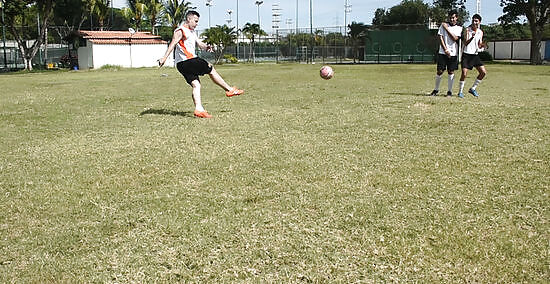
Find weak links in the wall. If you have to shoot the ball over the wall during a direct free kick, you should try to find the easiest route to the goal. Identify the shortest player on the opposing wall and try to kick the ball over their head. Remember that the ball has to go over the wall, but come down far enough to travel under the top of the goal post. Taller players will force you to kick too high and the ball may not come down in time to reach the net.
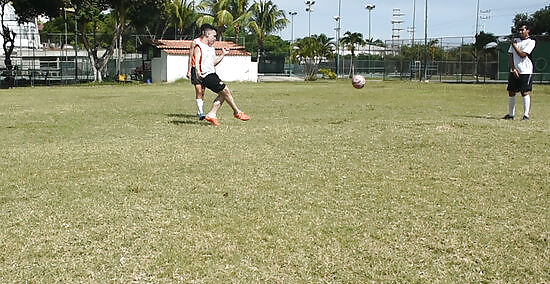
Switch your feet. If you have the ability to kick the ball confidently with both legs, you should change your kicking foot depending on what side of the goal you're on. If you’re kicking from the right side of the goal, you’ll have an easier time scoring using your left foot. If you’re kicking from the left side of the goal, you’ll be able to take a more effective shot using your right foot. Sometimes coaches will use separate strikers to kick direct free kicks from different parts of the pitch. If one of your legs is dominant, always use it to shoot free kicks. The angle from which you attack the goal isn’t as important as the accuracy of your kick.










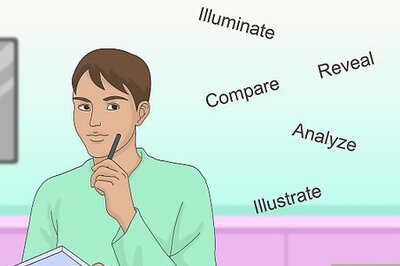







Comments
0 comment